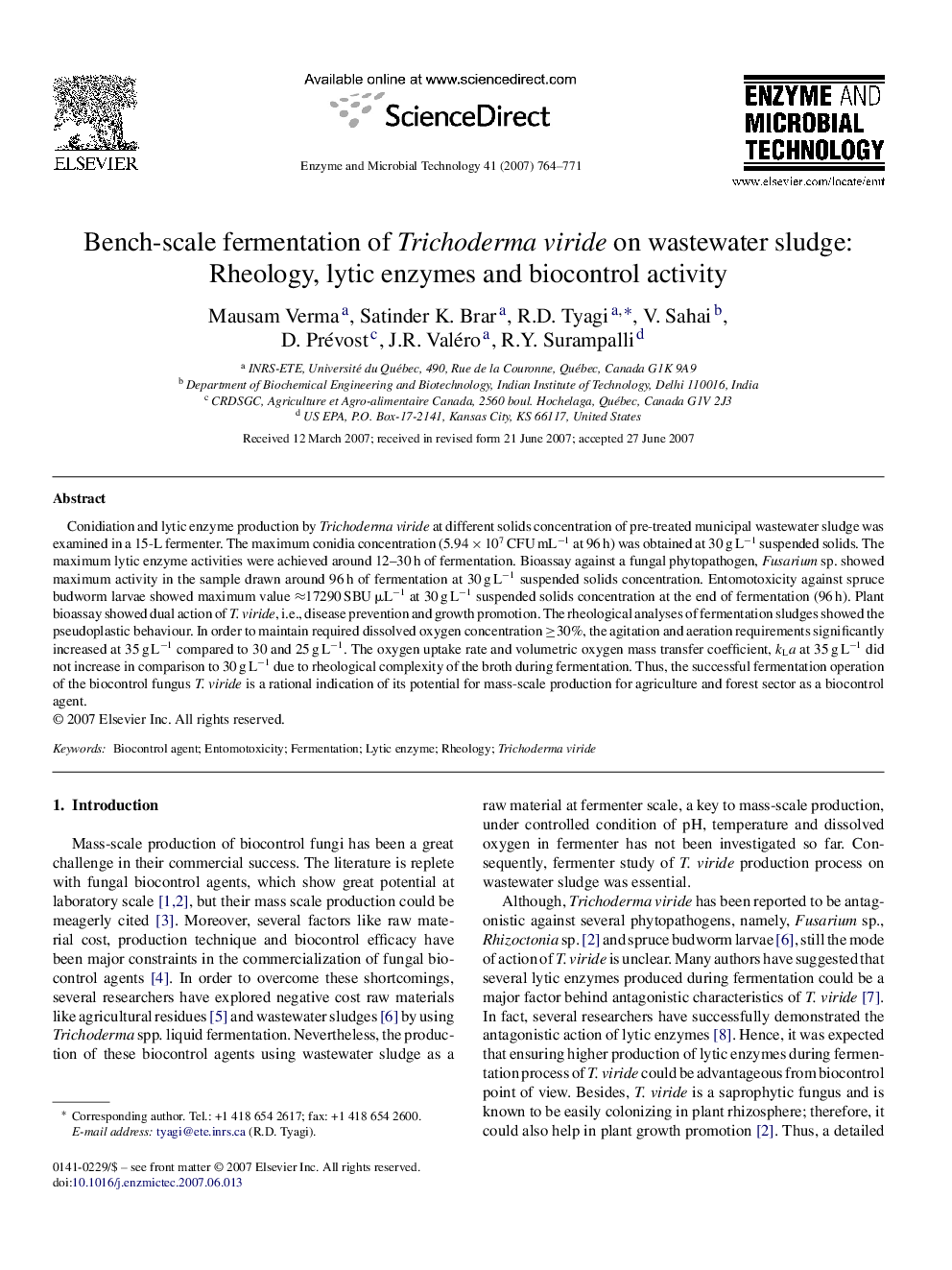| Article ID | Journal | Published Year | Pages | File Type |
|---|---|---|---|---|
| 18085 | Enzyme and Microbial Technology | 2007 | 8 Pages |
Conidiation and lytic enzyme production by Trichoderma viride at different solids concentration of pre-treated municipal wastewater sludge was examined in a 15-L fermenter. The maximum conidia concentration (5.94 × 107 CFU mL−1 at 96 h) was obtained at 30 g L−1 suspended solids. The maximum lytic enzyme activities were achieved around 12–30 h of fermentation. Bioassay against a fungal phytopathogen, Fusarium sp. showed maximum activity in the sample drawn around 96 h of fermentation at 30 g L−1 suspended solids concentration. Entomotoxicity against spruce budworm larvae showed maximum value ≈17290 SBU μL−1 at 30 g L−1 suspended solids concentration at the end of fermentation (96 h). Plant bioassay showed dual action of T. viride, i.e., disease prevention and growth promotion. The rheological analyses of fermentation sludges showed the pseudoplastic behaviour. In order to maintain required dissolved oxygen concentration ≥30%, the agitation and aeration requirements significantly increased at 35 g L−1 compared to 30 and 25 g L−1. The oxygen uptake rate and volumetric oxygen mass transfer coefficient, kLa at 35 g L−1 did not increase in comparison to 30 g L−1 due to rheological complexity of the broth during fermentation. Thus, the successful fermentation operation of the biocontrol fungus T. viride is a rational indication of its potential for mass-scale production for agriculture and forest sector as a biocontrol agent.
